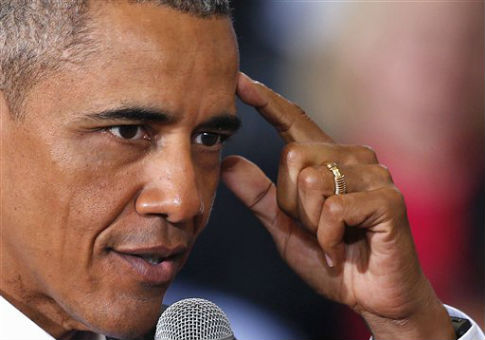The Department of Justice will spearhead a multi-agency research effort into "smart gun" technology that was ordered as part of President Obama’s executive action on guns last week.
Last Tuesday, the president announced a number of initiatives he said were designed to combat gun violence in the United States. One of those initiatives involved further government research into technologies designed to help track guns more closely and prevent their unauthorized use. He ordered the Department of Justice, the Department of Homeland Security, and the Department of Defense to coordinate on a report detailing the reliability and usability of the technology in its current form.
Maj. Adrian J.T. Rankine-Galloway, a Department of Defense spokesman, described the effort as "an interagency effort that is lead by the Department of Justice." Sheila Jerusalem, a Justice Department spokeswoman, said that the agencies will conduct "research into gun safety technology that would reduce the frequency of accidental discharge or unauthorized use of firearms, and improve the tracing of lost or stolen guns." She said they have three months to provide the president a report that details a "strategy designed to expedite the real-world deployment of such technology."
Jerusalem said the report is a bookend to a project the president began in 2013. As a part of his "Now Is the Time" plan, the president ordered the National Institute of Justice to put together a review of existing smart gun technology. The review concluded that smart gun technology was feasible and on the verge of commercial availability.
This led the institute to announce the Gun Safety Technology Challenge to test the reliability of smart guns. "Such advanced safety technologies could benefit users with improved personalization and added protections from theft and unauthorized use," Jerusalem said of the challenge. "However, the potential impact of these safety technologies on the firearms’ performance remains a concern. "
"Such advanced safety technologies could benefit users with improved personalization and added protections from theft and unauthorized use," Jerusalem said of the challenge. "However, the potential impact of these safety technologies on the firearms’ performance remains a concern. "
The submission period for the challenge ended the day after the president announced his executive actions involving firearms. The submissions are under review and, Jerusalem said more information on the challenge will be released in the "coming weeks."
Once the agencies finish their joint report on smart-gun technology the president ordered them to "review the availability of smart gun technology on a regular basis, and to explore potential ways to further its use and development to more broadly improve gun safety. In connection with these efforts, the departments will consult with other agencies that acquire firearms and take appropriate steps to consider whether including such technology in specifications for acquisition of firearms would be consistent with operational needs."
If any federal agency does purchase a significant number of firearms outfitted with smart gun technology, the industry, which has given thousands of dollars to President Obama, could make millions in profits.
